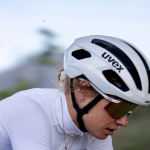Retail sector profit growth again outpaced sales growth in the retail third quarter, but slowed substantially from the outstanding numbers posted in the second quarter. Acquisitions and the accompanying integration expenses had much less of a negative impact on the numbers for the period as the companies that benefited from big deals over the last year started to see some of the volatility slow. Profits for the retail end of the sports industry increased at roughly a two-to-one margin over growth in sales for the period.
Overall sector income was up 23.3% for the third quarter after jumping more than 63% in Q2, while sales grew just 12.9% for third quarter, a bit healthier than the second period. The largest increase in the profit line again came in the Specialty channel, which increased 25.2% for the period, a far cry from the 92% jump seen in Q2. The Catalog/Team/Web channel, which Sports Executive Weekly broke out as a separate segment for the first time last quarter, swung to a profit for the period and again led the gains in the sales line on a percentage growth basis, increasing 50.4 % for the quarter, nearly double its growth rate in second quarter.
Specialty Channel profit growth was aided by the inclusion of Hat World in the Genesco numbers in this years Q3, but also benefited from sharp margin gains at The Buckle. Hat World added $7.7 million to Genescos Specialty Retail operating profit line and added $59.5 million in sales for the period. Excluding Hat World, which was acquired in early April of this year, GCO Specialty would have seen sales increase 10.0% for the quarter to $177.3 million and operating profit would have risen just 4.8% to $18.7 million, thanks to continued issues at the Underground Station group.
Foot Locker did not break out the impact of Footaction on the bottom line this quarter, but did say that sales would have risen about 5.4% without the inclusion of the 350 stores they acquired earlier this year. That would put Footaction sales at approximately $108 million for the period. Currency exchange benefits added another $25 million to the sales number for Q3. Total sales would have increased just 3.3% for the period excluding FX rate benefits and Footaction.
In their recently filed 10-K, Foot Locker indicated that the Athletic Stores business, which includes all domestic and international stores for all nameplates under its umbrella, saw sales increase 15.3% for the third quarter to $1.27 billion, compared to $1.10 billion in Q3 last year. Excluding Footaction, the Athletic Stores business was up just 5.5% for the period. Operating profit for the group increased 16.2% to $122.0 million, or 9.6% of sales, but was held back by the impact of Footaction, which was said to have impacted Return on Sales by 90 basis points for the quarter. The balance of the business is listed under Direct-to-Consumer, an area that held back growth for the company. Sales here rose just 3.3% in Q3 to $94 .0 million and operating profit fell 15.4% to $11.0 million, or 11.7% of sales versus 14.3% of sales in the year-ago period.
Excluding the Hat World and Foot Locker benefits, sales in the Specialty channel grew just 7.7% in the quarter. Outside of acquisition-aided growth in the period, it was up to Oakley to post the big numbers, while The Finish Line continued its string of strong double-digit gains in their fiscal Q2 that ended August 28. Sales for FINLs fiscal third quarter, which ended November 27, increased 16.4% to $235.3 million. Comps were up 8.0% versus a 25% increase in Q3 last year. FINLs Q3 numbers are not included in the chart on page two because the retailer releases Q3 earnings results in December. The overall sector growth percentage results would have been little changed on the sales line using the FINL Q3 numbers.
Finish Line results, while slowing versus last year, still overshadow the U.S. gains at mall rival Foot Locker Inc. where comp gains are improving but still languish in the low-single-digit neighborhood.
Return on Sales, which is represents income as a percent of sales, was a healthy 7.0% for the Specialty channel in Q3, up about 50 basis points from the 6.5% ROS posted in Q3 last year, and up 220 basis points from the 4.8% ROS achieved in the second quarter of this year.
In the Sporting Goods Channel, the impact of Garts acquisition of The Sports Authority actually had a positive impact on channel results rather than the drag in past quarters. The new merged TSA business had its first anniversary quarter, but still saw integration expenses play a role in weaker bottom line results for the period. Dicks also posted a loss on merger integration costs.
Excluding the expenses associated with the two deals, TSA net income would have still fallen 84% to just $692,000, or just 0.1% of sales, but Dicks would have posted net income of $2.9 million versus a loss of $103,000 in Q3 last year on a pro forma basis.
Excluding the merger expenses for the two retailers, the Sporting Goods channel would have seen profits rise just 1.1% for the period and ROS would have declined 20 basis points to 2.1% from 2.3% of sales in Q3 last year.
The channel also saw two new entrants in the chart for this years Q3, with both Cabelas and Gander Mountain making strong contributions to the sales growth in the channel for the quarter. While Cabelas hurt the channel profit growth in Q2, it was Gander Mountain that had the negative impact for third quarter, due in large part to warmer weather, negative firearms comps, and the impact of new competition on some stores.
Still, the two had a noticeable impact on the channel as profits would have declined 9.8% to $31.9 million without the pair, resulting in a 30 basis point decline for the channels ROS to 1.7% of sales from 2.0% of sales in Q3 last year. Channel sales would have increased 5.7% without their inclusion.
Return on sales for the Sporting Goods channel was up slightly to 1.8% for the period versus 1.7% of sales in the year-ago period.















